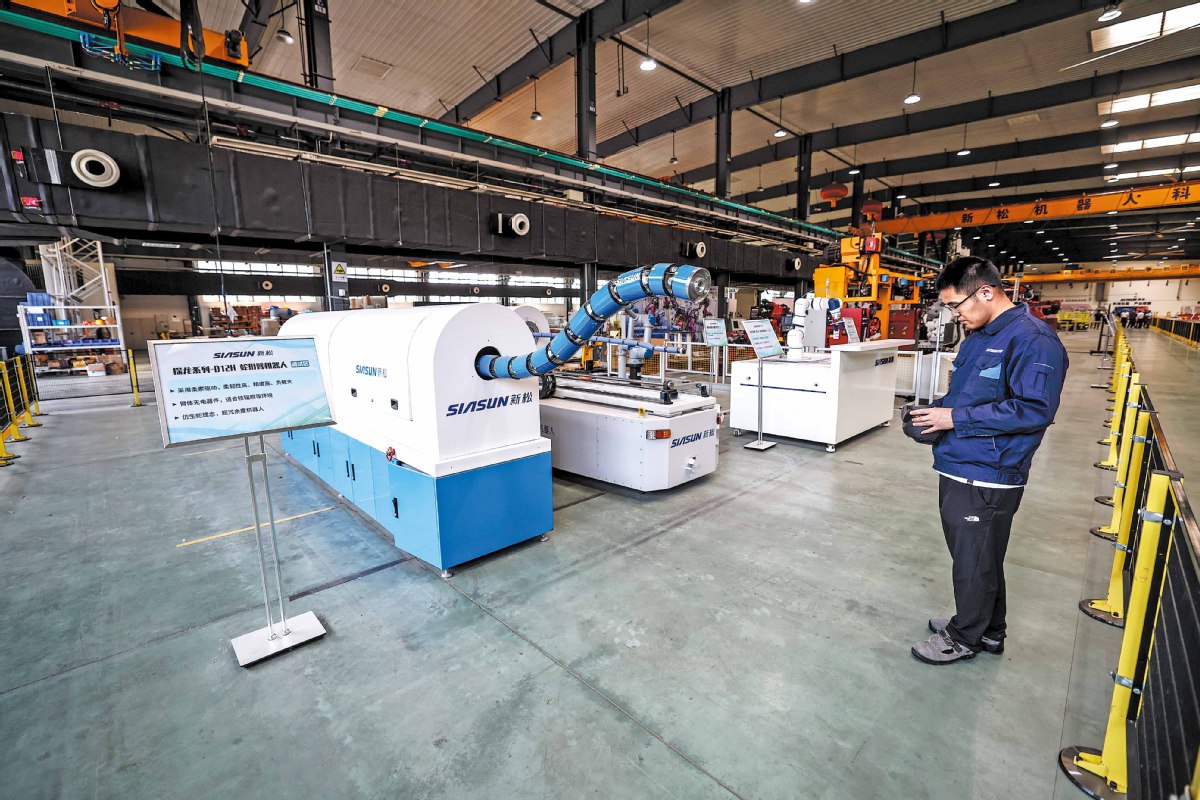Snake-like, miniature robots redefine limits of engineering
Maintenance and repair of high-tech equipment revolutionized by research innovations


Complex applications
However, the team did not stop there. They targeted more complex application scenarios in the field of flexible continuum snake robots — particularly the inspection of aeroengines without the need to remove and dismantle them.
"The inside of an engine is like a metallic labyrinth," said Yang Laihao, an associate research fellow in the field of aeroengines at Xi'an Jiaotong University.
"In such complex and confined spaces, traditional rigid robotic arms struggle, whereas flexible continuum robots have great potential due to their superior dexterity and environmental adaptability," he said.
"However, current joint configuration designs face issues such as instability under compression, poor torsional performance, and insufficient load capacity. Additionally, under the influence of factors like gravity and friction, the end positioning error of these flexible continuum robots can increase exponentially with length, which remains a major obstacle to their practical application," he added.
To address these challenges, the team proposed several new joint designs from concepts such as contact-aided and active-passive hybrid configurations. They helped achieve a more than hundredfold improvement in bending stiffness, a twentyfold increase in torsional stiffness, and solved instability issues.
Yang said they have now achieved efficient and high-precision modeling of continuum robots, with efficiency reaching the millisecond level and repeat positioning accuracy now at the millimeter level.
The team has also developed multiple types of continuum robot systems for the maintenance of high-end equipment. They include fully active continuum robots with a length-to-diameter ratio exceeding 80, and active-passive continuum robots that can extend to several meters. These have been validated in various aviation equipment applications.
"I have seen aeroengine inspection technicians climb into long-narrow inlets to manually inspect blade cracks with flashlights. This often results in lumbar spine injuries, requiring job rotation every six months," Chen said, citing field surveys.
- Consumption push promises summer tourism boom
- Snake-like, miniature robots redefine limits of engineering
- 2,000-year-old steel acupuncture needles unearthed in Jiangxi
- New carbon neutrality initiative launched in Beijing
- Three killed in downtown Guangzhou traffic accident
- How does the eight-point code profoundly change China?





































